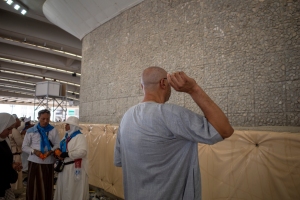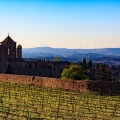Mecca, located in the heart of Saudi Arabia, is the most significant city in Islam and the destination of the annual pilgrimage (Hajj), one of the five pillars of the Muslim faith. Beyond its religious importance, Mecca is also the birthplace of Muhammad and the setting for key events in his life and the early history of Islam.
Many historical sites connected to Muhammad’s life have disappeared due to urban expansion and redevelopment. However, several locations remain accessible, offering visitors a tangible link to the past. From the Cave of Hira, where he is said to have received his first revelations, to Mount Arafat, where he delivered his final sermon, these sites provide a deep historical and cultural connection to Islam’s formative period.
Here is an overview of key locations in Mecca and its surroundings associated with Muhammad’s life.
1. Masjid al-Haram and the Kaaba: The Center of Worship
At the heart of Mecca stands the Great Mosque (Masjid al-Haram), home to the Kaaba, the cubic structure towards which Muslims direct their prayers. According to Islamic tradition, the Kaaba was originally built by Abraham and Ishmael as the first house of worship.
During his youth, Muhammad took part in the reconstruction of the Kaaba after it was damaged by flooding. When rival clans disputed the honor of placing the Black Stone back into its position, he proposed a solution that showcased his diplomacy: he spread his cloak on the ground, placed the stone in the center, and had the leaders of each tribe lift it together.
The ritual of Tawaf—circling the Kaaba seven times counterclockwise—is an essential practice of both Hajj and Umrah, emphasizing the central role of this site in Islamic tradition.
2. The Cave of Hira on Jabal al-Nour: The Beginning of Revelation
Jabal al-Nour, or the “Mountain of Light,” is a rocky elevation northeast of Mecca that houses the Cave of Hira. Muhammad is said to have retreated here for contemplation, and at the age of 40, he reportedly received his first revelation of the Quran through the angel Jibril (Gabriel).
This moment marked the beginning of his prophetic mission. Today, many visitors and pilgrims climb the steep mountain to reach the cave, reflecting on the historical significance of the site.
3. Mount Arafat: The Farewell Sermon
About 20 kilometers from Mecca lies Mount Arafat, also known as Jabal ar-Rahma or the “Mountain of Mercy.” It was here that Muhammad delivered his Farewell Sermon in 632 CE during his final pilgrimage, reinforcing the principles of justice and equality among believers.
Each year, on the 9th of Dhu al-Hijjah, millions of pilgrims gather at Arafat for Wuquf (the “standing at Arafat”), regarded as the most significant moment of Hajj. The gathering symbolizes humility and the pursuit of divine forgiveness.
4. Muzdalifah: A Night of Reflection
After leaving Arafat, pilgrims travel to Muzdalifah, an open plain where they spend the night under the sky. Here, they perform prayers and collect pebbles for the upcoming ritual of Ramy al-Jamarat (stoning of the pillars) in Mina.
Muhammad himself is said to have spent the night at Muzdalifah during his pilgrimage, establishing a practice that continues to be followed.

5. Mina and the Jamarat Bridge: A Symbolic Rejection of Evil
Mina, a desert valley near Mecca, is the site of the Ramy al-Jamarat ritual, where pilgrims throw stones at three stone pillars known as the Jamarat. This act symbolizes resisting temptation.
Islamic tradition links this practice to the story of Abraham, who, when tested with the command to sacrifice his son, was confronted by the devil three times and repelled him by throwing stones. Muhammad also performed this ritual, and today, pilgrims continue it as a symbolic reaffirmation of spiritual discipline.
6. Al-Khayf Mosque: A Place of Prayer
Located in Mina, Al-Khayf Mosque is considered a historically significant site where many prophets, including Muhammad, are said to have prayed. During Hajj, it remains a key location for communal prayers.
7. Jabal al-Thawr: The Refuge of the Migration
Another significant mountain in Islamic history is Jabal al-Thawr. A cave here is believed to have provided shelter to Muhammad and his companion Abu Bakr as they fled Mecca for Medina in 622 CE—a journey known as the Hijra.
According to tradition, their hiding place was concealed by a spider’s web and a nesting pigeon, leading their pursuers to believe that no one had entered the cave. The Hijra marks the beginning of the Islamic calendar and is a defining moment in Muhammad’s life.
8. The Well of Zamzam: A Source of Water in the Desert
Within Masjid al-Haram lies the Well of Zamzam, which has supplied water to pilgrims for centuries. Islamic tradition holds that it sprang forth miraculously when Hagar, the wife of Abraham, searched desperately for water for their son Ishmael in the desert.
Muhammad spoke of the well’s beneficial properties, and drinking from it remains an important ritual for visitors to Mecca.
9. The Hira Cultural Exhibition: A Historical Perspective
For those interested in a deeper understanding of Islamic history, the Hira Cultural Exhibition offers an educational experience on Muhammad’s life and the key events of early Islam. The center features interactive displays and a specialized library, providing context to Mecca’s evolution and its role in religious history.
Mecca is the epicenter of Islamic worship, a city deeply tied to Muhammad’s life and legacy. While many historical sites have been lost to modernization, those that remain continue to offer pilgrims and visitors a connection to the pivotal moments in his journey.




